The land of fire and ice!
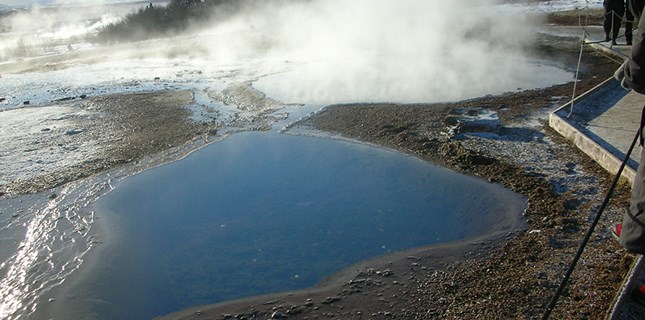
The Ladies’ College Geography Department organised a fascinating 5 day trip to see the wonders of Southern Iceland. We departed from Guernsey on the first Aurigny flight on Friday 19th February and left Gatwick at 11.15 on a WOW Air flight, arriving at Keflavik International airport by 2.45 pm (same time zone in winter!) A coach collected us and took us straight to the Blue Lagoon where we spent a wonderful couple of hours swimming in hot, silica-rich, geothermal seawater and covering our faces with rejuvenating white mud. The air temperature was just below freezing and it was snowing as we entered the lagoon so this was a magical start to the trip. As people walked out of the changing rooms in swimsuits into the freezing cold air, the expressions on their faces as they sank into the hot water said it all! This was a perfect start to an amazing trip.
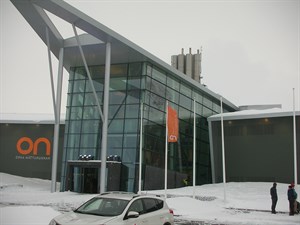
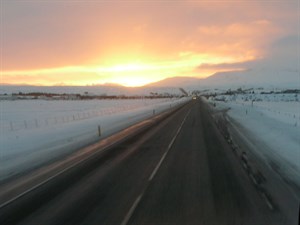
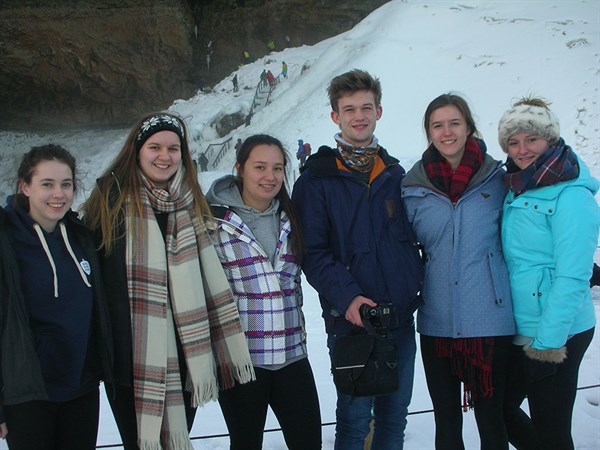
We had a night in a local hostel in Reykjavik and then loaded up the coach with our cases to head off towards the SE of the island. Whilst we were staying at Hotel Dyrholaey at Myrdalur for two nights we saw many amazing landforms but were disappointed not to see clear evidence of the Aurora Borealis (Northern lights). However, on many occasions we could be seen in small groups hopefully gazing at the northern night skies, willing the bright green curtains to show themselves, while some of the group resorted to snowball fights as they waited.
The advantage of a volcanic location for sustainable energy was reminded to us when passing a geothermal power station before visiting two impressive waterfalls off the 60 metre high basalt cliffs of the old coastline at Seljalandsfoss and Skogafoss. These falls were due to meltwater from Myrdalsjokull ice cap and, later in the week, we also visited the huge, popular Gullfoss double waterfall and its mile long gorge in the Golden Circle.
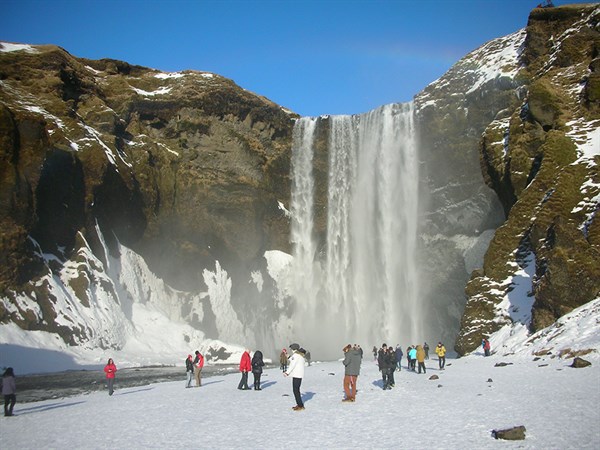
Evidence of volcanic eruptions could be seen all around us as the coastal plain was strewn with debris from a jokulhlaup (or glacier burst) when the heat from the Eyjafjallajokull volcano melted the glacier and caused a flood in 2010 but also prevented flights in Europe due to the ash ejected high into the atmosphere. The visitor centre, in the shadow of the volcano, demonstrated how an enterprising farming family, found a way to benefit from the eruption by showing a film to tourists (for a small fee) to illustrate the effects of that eruption on their lives. The students also walked around the dramatic volcanic crater of Kerid.
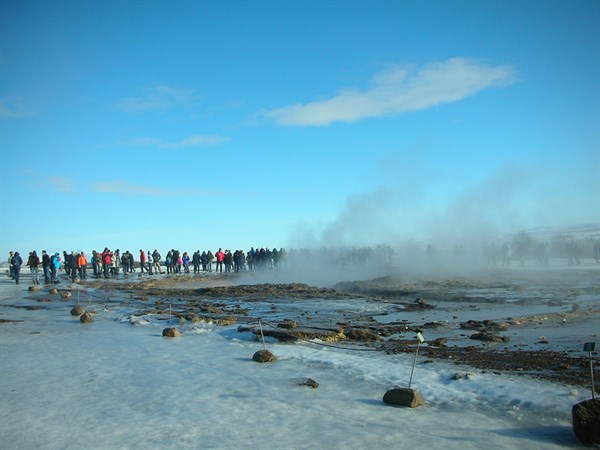
The Vatnakokull ice cap is the largest one in Iceland and it spawns several glaciers, which slowly move down the valleys in Skaftafell National Park. We visited one that has been retreating since the end of the 19Th century at an average rate of 100 metres per year. It was fascinating to see the turquoise blue glacier ice and deep crevasses as well as the static icebergs, waiting for summer when the frozen lake in front of the glacier would thaw and allow them to cruise around the lake and onwards to the sea.
The coastal scenery at Vik was very different from Guernsey’s coastline with black volcanic sands, dark, towering cliffs and huge caves, a 120 metre high rock arch and several stacks. Our students had a group photograph taken on a low section of the cliff made up of hexagonal basalt columns from an ancient lava flow. The swells were dangerous so the students were not allowed to walk close to the shore. The 1918 Katla eruption created so much volcanic debris that it extended the coastal plain by 500 metres, a form of natural reclamation. This meant that some of the cliffs we saw were fossil land forms, no longer being eroded by the sea but subjected to freeze thaw weathering resulting in huge boulders falling on to the lower slopes and threatening isolated farmsteads below.
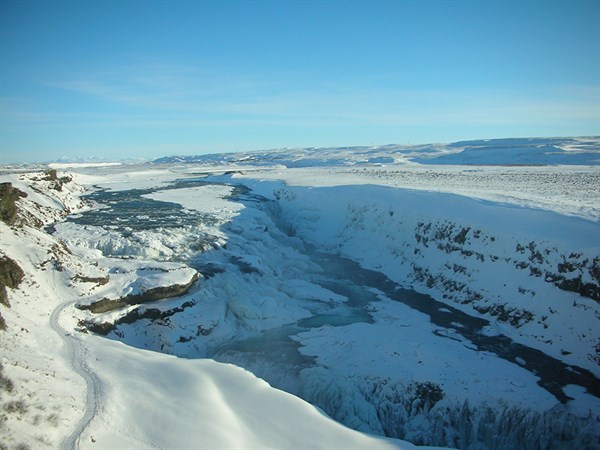
We continued to be amazed by the unspoilt beautiful landscape, mostly covered in snow, throughout the trip. The Golden Circle route showed us a trio of natural wonders. We walked through the rift valley in Thingvellir National Park where the two tectonic plates on the Mid Atlantic Ridge are pulling apart at 3 centimetres a year. Thingvellir was where Iceland’s first parliament was established in 930AD. We also primed our cameras to catch the regular steam eruption, every 10 minutes, at Strokkur geyser and saw the bubbling hot pools of mud and water.
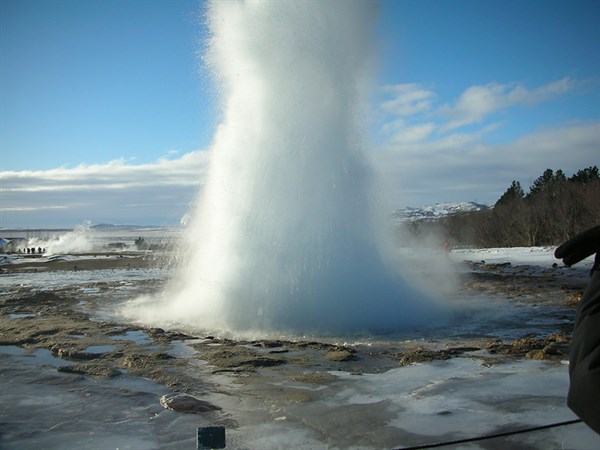
After the Blue Lagoon experience, we decided to include a swim in an outdoor, geothermal swimming pool on two more days. We also had some time to visit the Perlan centre and some window shopping in Reykjavik on our last day. Our accommodation was warm and clean and there was plenty of food to eat and many stops for snacks and drinks. Luckily, we had no injuries from falls on icy paths but, as the organiser of the trip, I did not venture out without my blue walking poles! I would urge anyone to make the trip to this fascinating country.
Mrs M Brogan
Head of Geography
"I really enjoyed the Iceland trip and it was really useful to be able to see things we have learnt about like glaciers and volcanoes in real life rather than just in the text book. My favourite part was the Blue Lagoon and swimming in the different geothermal pools." Amie Le Feuvre
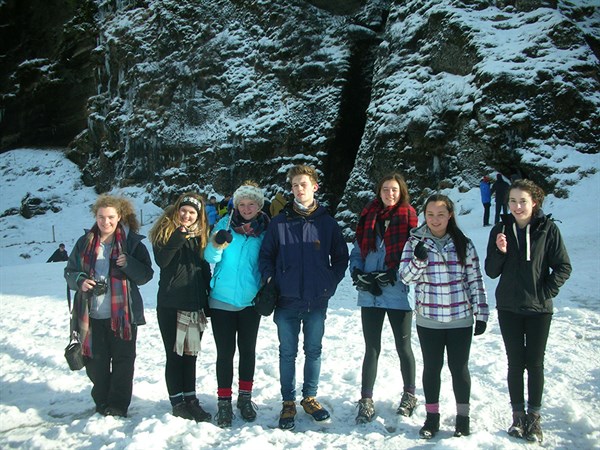
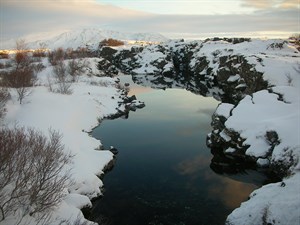
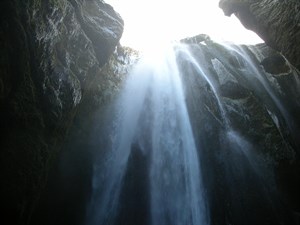
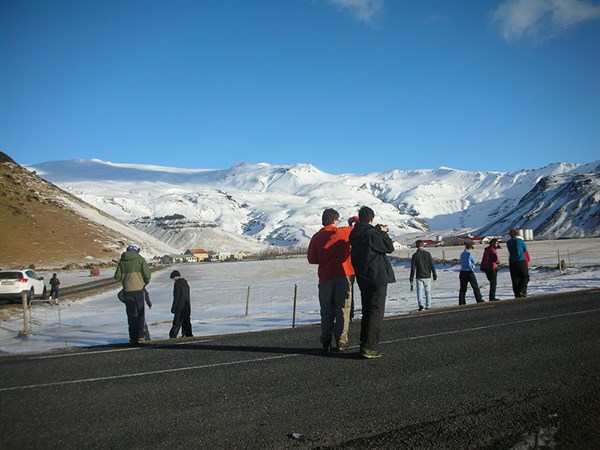
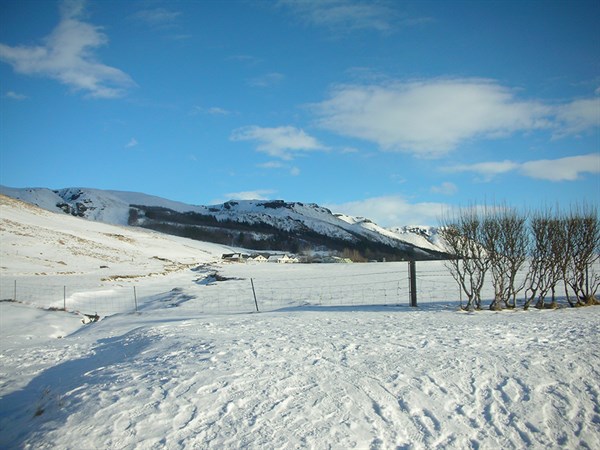
Back






